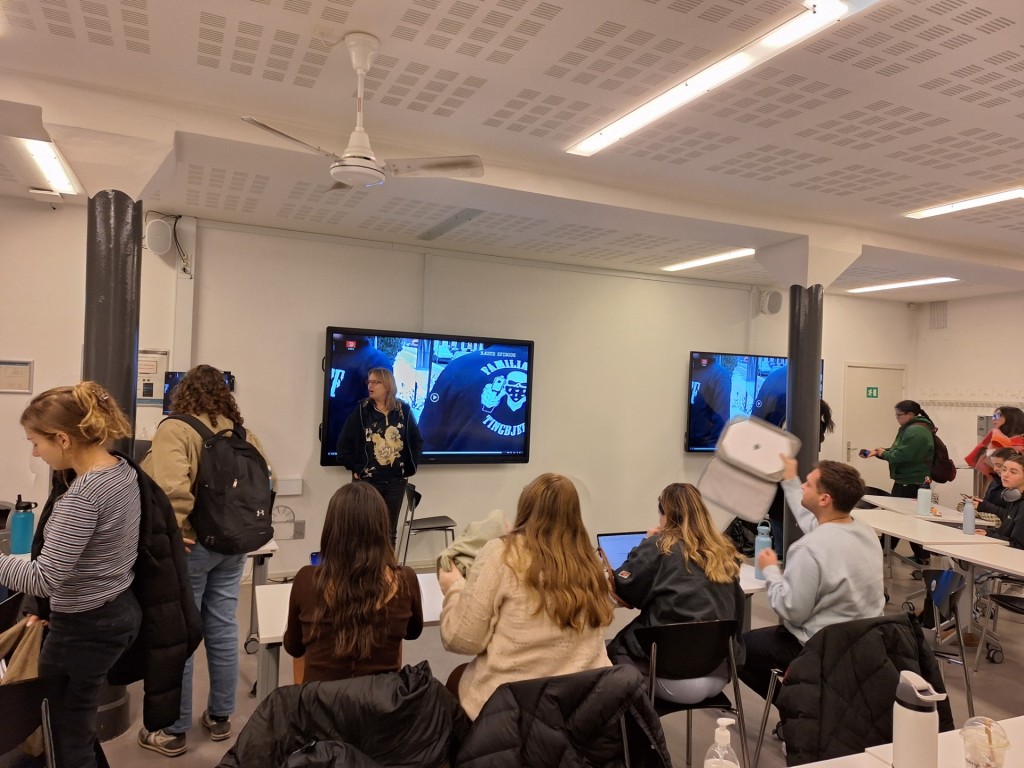Our weekly Monday afternoon class begins as any other; we move around the class into our pre-set groups, and then get ready for the three-hour lesson ahead. Unlike most other days though, we have a guest lecturer who is here to talk about his experience in society after serving a prison sentence. As with many stories though, it is not so much the man himself that interests up, but rather his experiences and how they compare to what we’ve learned in the classroom thus far.
As a class focused on prisoners and prison conditions, our class has two teachers; our esteemed instructor Anna, and a massive catalogue of interviews, podcasts, and other media representing the perspectives of prisoners, prison guards, and social workers. These snips of media have been taking the wheel recently, as we’ve been going over the topic of prison conditions and lifestyles, and now it was time to see a living example of that.

You see, unlike in the United States, Denmark only imprisons people on one level, the national level, but boasts two types of prisons, open and closed. Open prisons are very similar to parole in the United States in that inmates are relatively free and are able to roam around the prison grounds, which often resemble a small cottage community or apartment, freely and are able to easily access jobs and education while they serve their sentence, As one can imagine, the purpose of these prisons is to get less violent inmates back into the ebb and flow of lawful society. As a gang-affiliated drug peddler, and with the fortune of some aspects of his crimes being ignored, it was this type of prison that our guest lecturer once ended up in for one-and-a-half years.
Closed prisons, on the other hand, are a lot more similar to those in the US. Though inmates have certain comparative privileges, such as individual cells, family visits without a plexiglass divider, and some access to education, their overall lifestyle is still highly restricted and gangs are known to arise. This is because closed prisons are for violent offenders or those who are flight risks in such a free environment as open prisons, making some inmates more survival-minded and less concerned with the possibility of being able to get transferred into an open prison. Gangsters, namely middle-to-high-end leadership, end up in these prisons, which only feeds into the gang mentality.


As the gang problem is taken seriously in Denmark, given the prominence of Christiania as the place where gangs do business, there is a great emphasis placed on exiting gang life. Along with encouraging pursuing education, there are social programs in place to help ex-convicts remain removed from gang activities, namely through therapy, assistance in finding lawful employment, drug rehabilitation Though they generally work, as with any policy, their case-by-case efficacy varies. It is this mindset, and experience in their faults, that drives our guest lecturer to advocate for sweeping prison reform, which has on occasion led him to speak before the Folketing, or the Danish Parliament.
With the semester nearing its end, my next few posts will cover the remaining two elective courses I have had the pleasure of taking; Counter-Terrorism and Intelligence Analysis and, perhaps the most pervasive staple of DIS, Danish Language and Culture.


Leave a comment